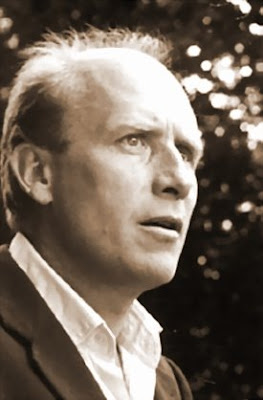Baadeh Sabah
_______

___
باد صبا
آلبرت لاموریس _______
Albert Lamorisse (1922-1970)
 Baadeh Sabah / The Lovers' Wind / Vent Des Amoureux [Farsi language] (avi) | [English Version]
Baadeh Sabah / The Lovers' Wind / Vent Des Amoureux [Farsi language] (avi) | [English Version]Shot 1970, completed posthumously 1978, 35mm
 Title Unknown (Postscript to Baadeh Sabah)
Title Unknown (Postscript to Baadeh Sabah) "A well- known French filmmaker, Albert Lamorisse, under the aus- pices of Iran's Ministry of Culture and Art, produced the poetic film "Lovers' Wind" (1969). Eighty-five percent of this dramatically visual film is shot from a helicopter, providing a kaleidoscopic view of the vast expanses, natural beauty, historical monuments, cities and villages of Iran. The "narrators" of the film are the various winds (the warm, crimson, evil and lovers' winds), which accord- ing to folklore, inhabit Iran. They sweep the viewers from place to place across the Iranian landscape, introducing the incredible variety of life and scenery in Iran. The camera, defying gravity, with smoothness and agility, provides a bird's eye view, caressing minarets and domes, peek- ing over mountain tops beyond, gliding over remote villages to reveal the life enclosed within the high mud-brick walls, bouncing along with the local wildlife, following the rhyth- mic, sinuous flow of the oil pipelines and train tracks, and hovering over the mirror-like nmosaic of the rice paddies that reflect the clouds and sky. The film is a testimonial to the Iranian landscape and people over which so many dynasties and kings have ruled and have, in turn, passed away. Ironically, on the tenth anniversarv of the completion of the film, yet another seem- ingly powerful dynasty (Pahlavi) has fallen, leaving, as the film points out, the land and the migrating tribal nomads who have survived more or less intact for centuries. Upon completion of the film, the Ministry of Culture and Art decided that Lamorisse had not sufficiently emphasized the industrialization of Iran. So he was called back to film additional sequences documenting that progress. This task was never completed, because the helicopter crashed while filming the Karaj Dam near Tehran, plunging Lamorisse and his crew to their deaths. This film, whose storybrook style of narration is often contrived, does not purport to be a social document on Iran; nevertheless, it has never been shown publicly in theaters in Iran."
-- Hamid Naficy
____


No comments:
Post a Comment